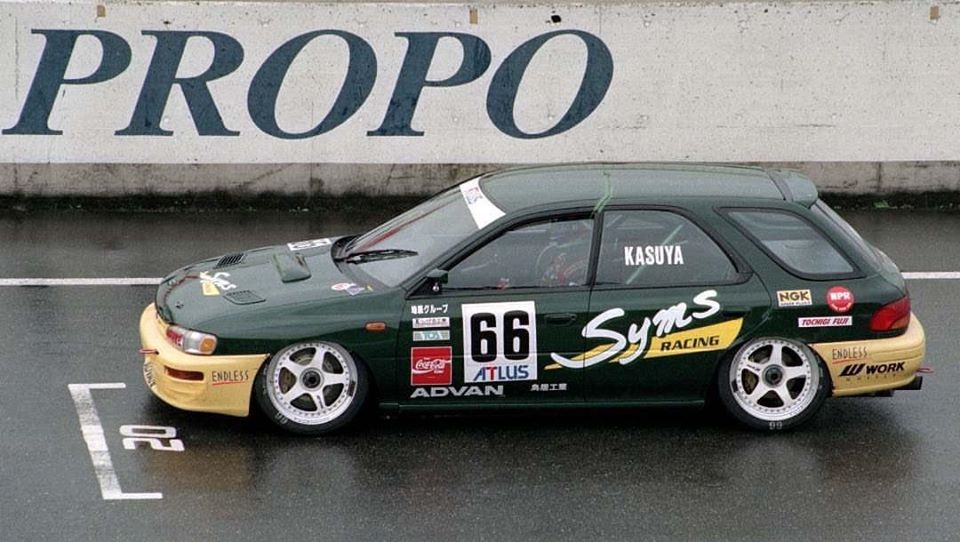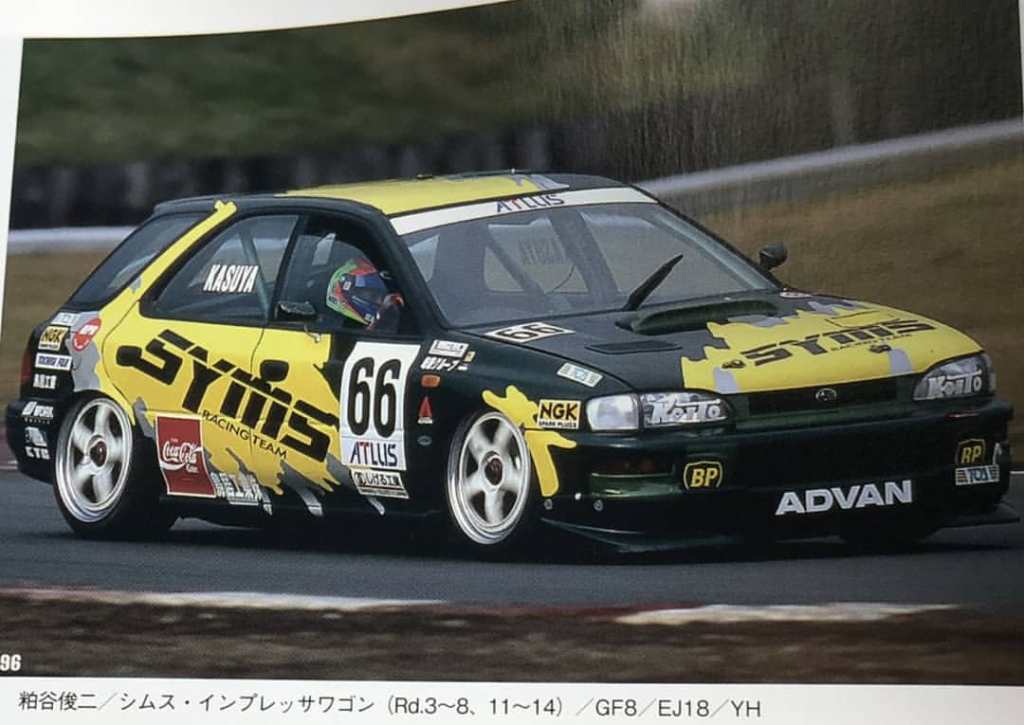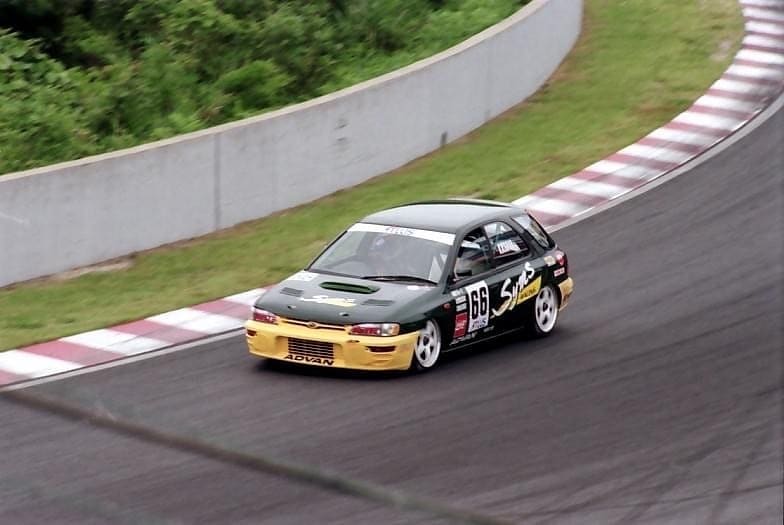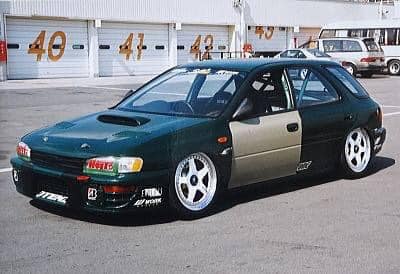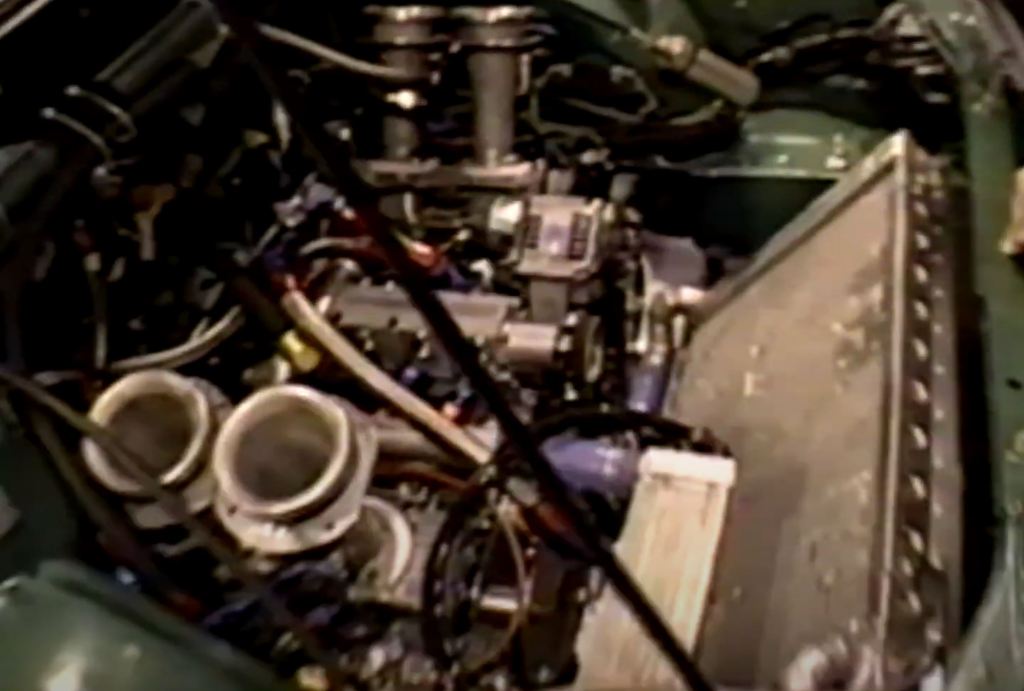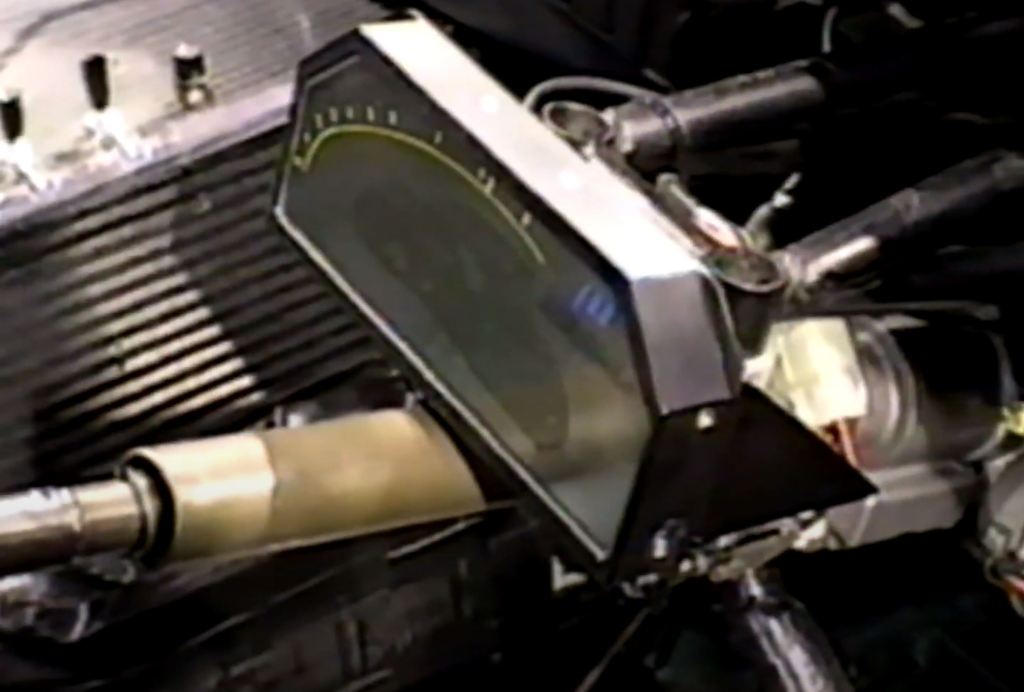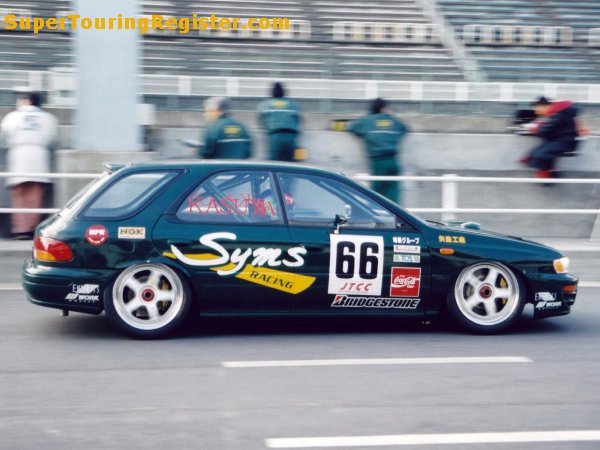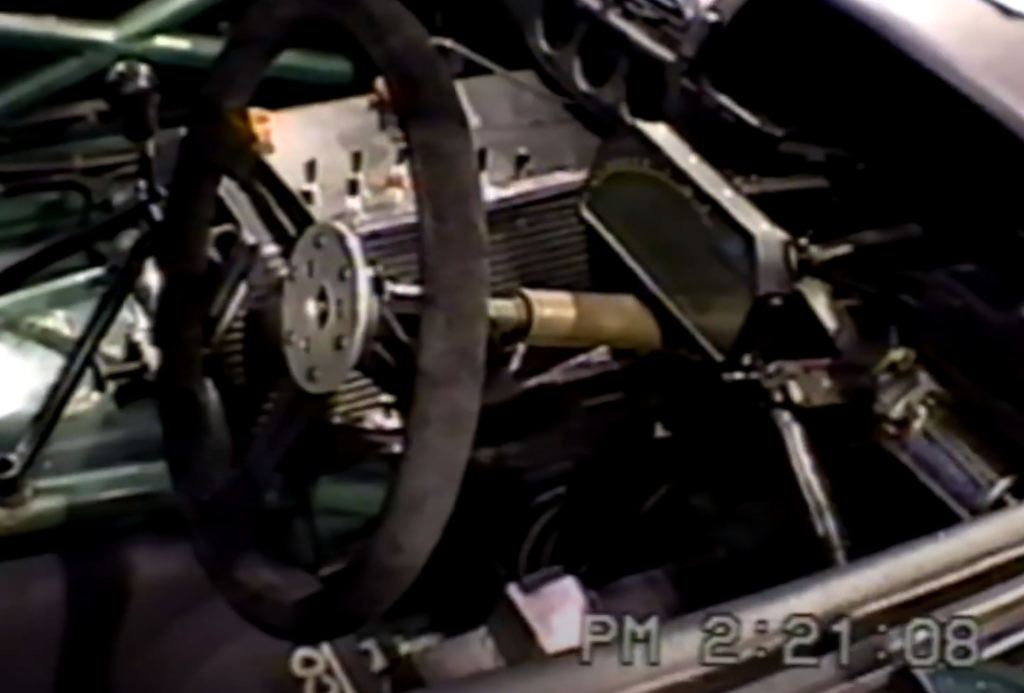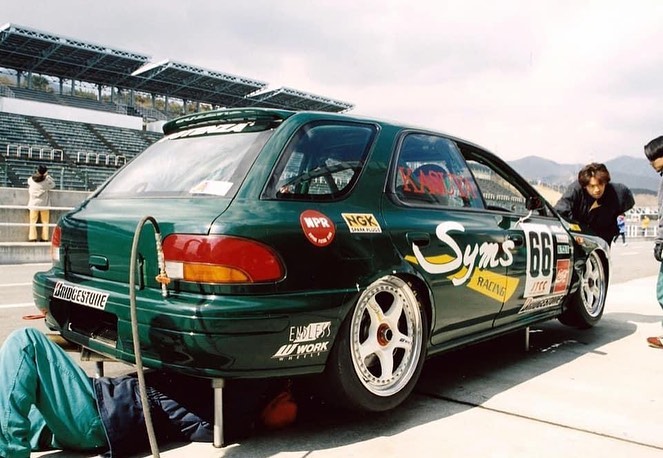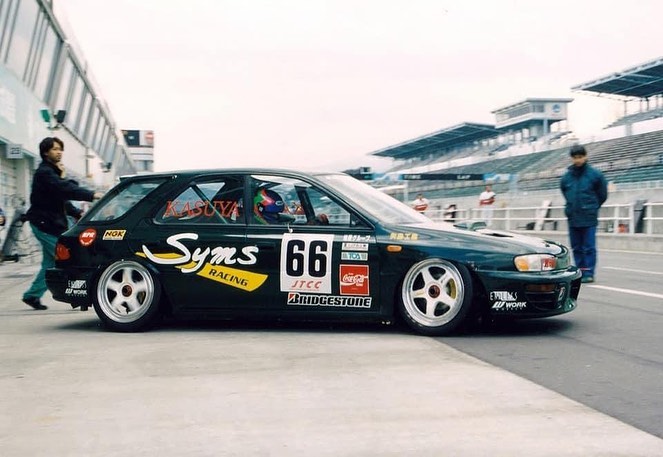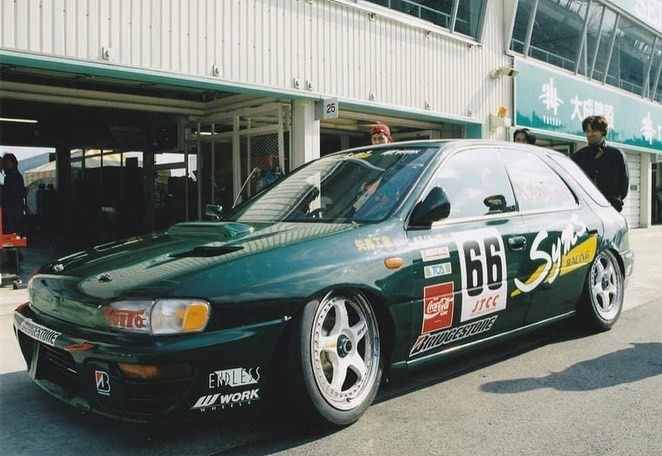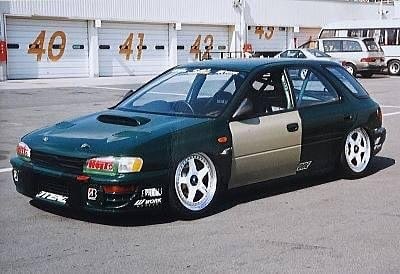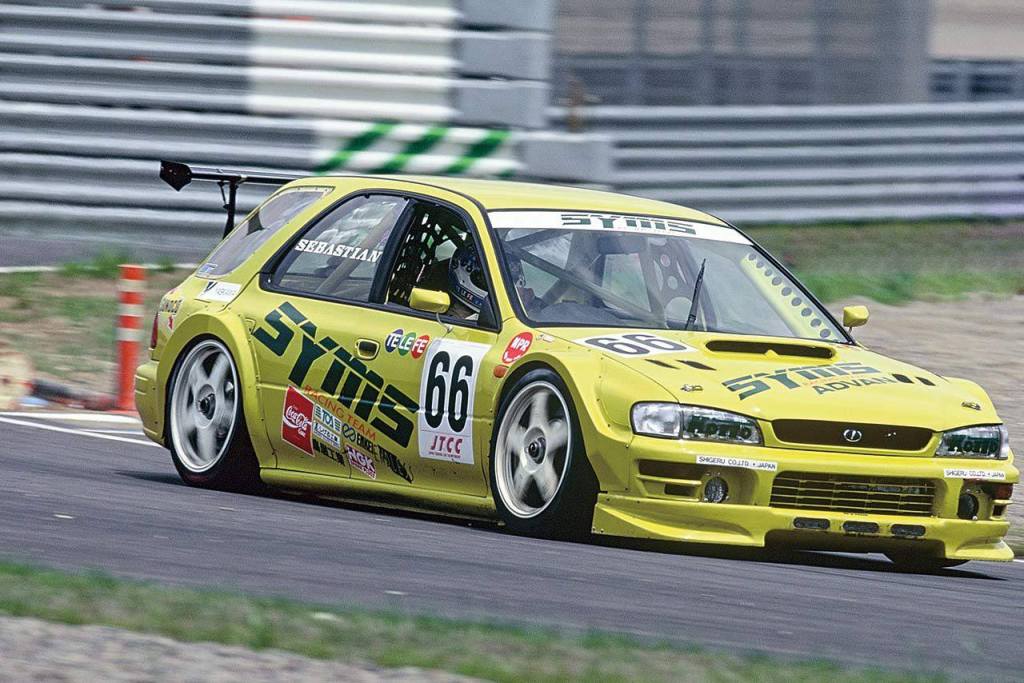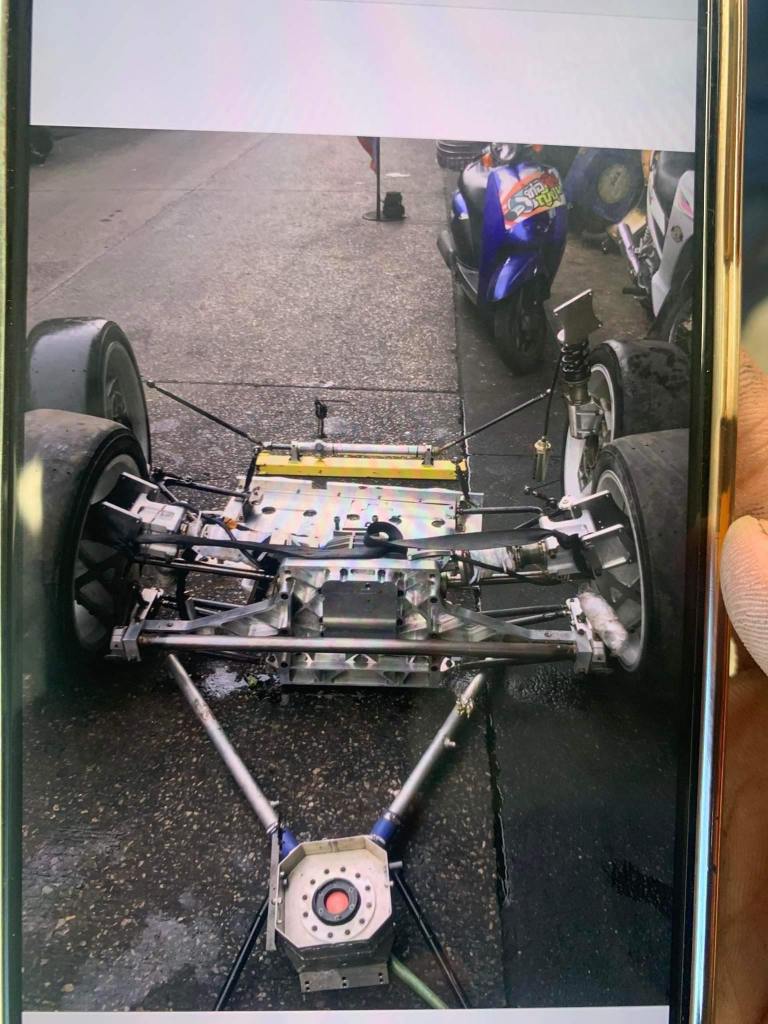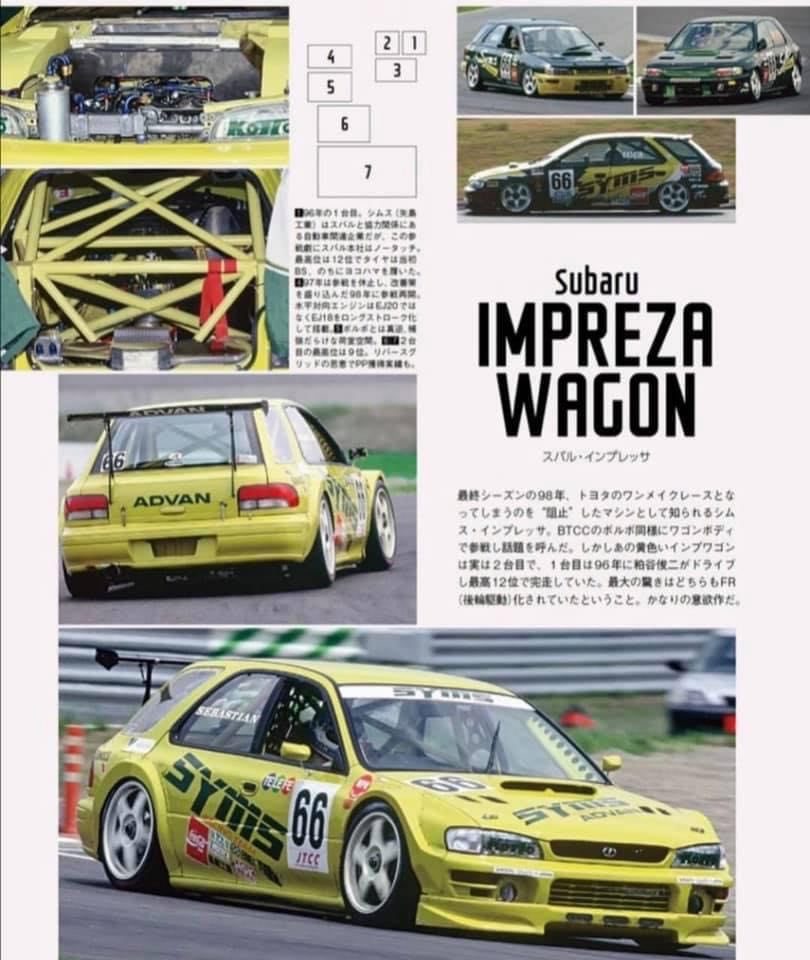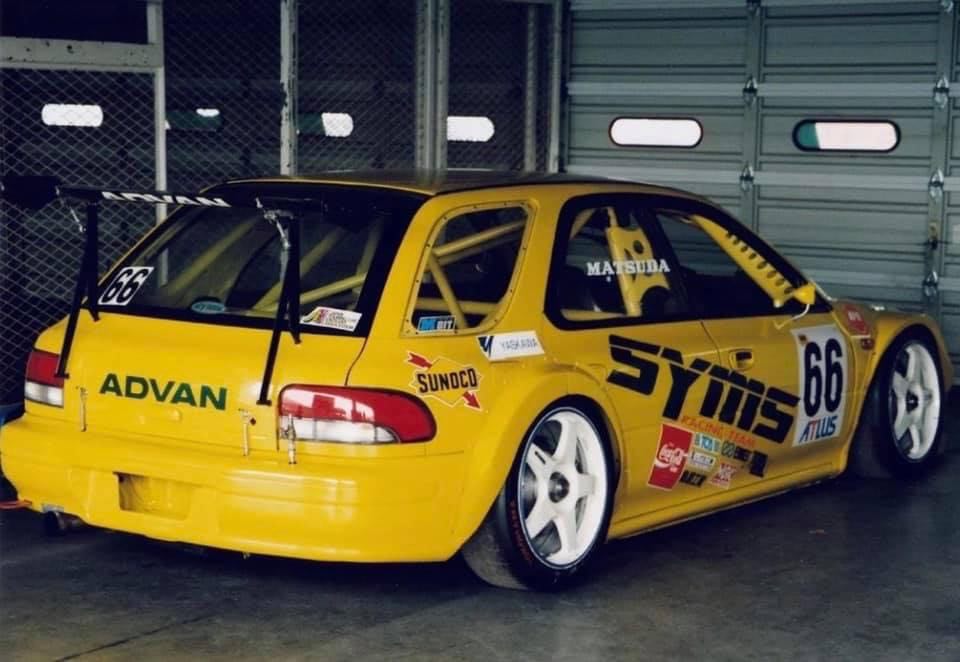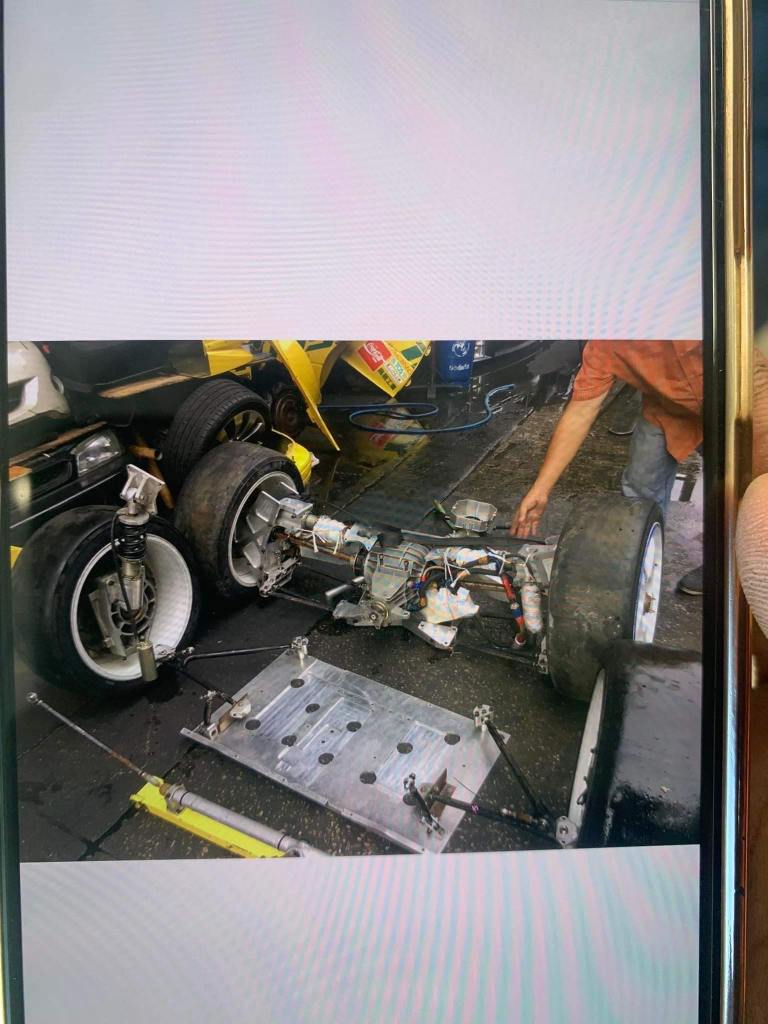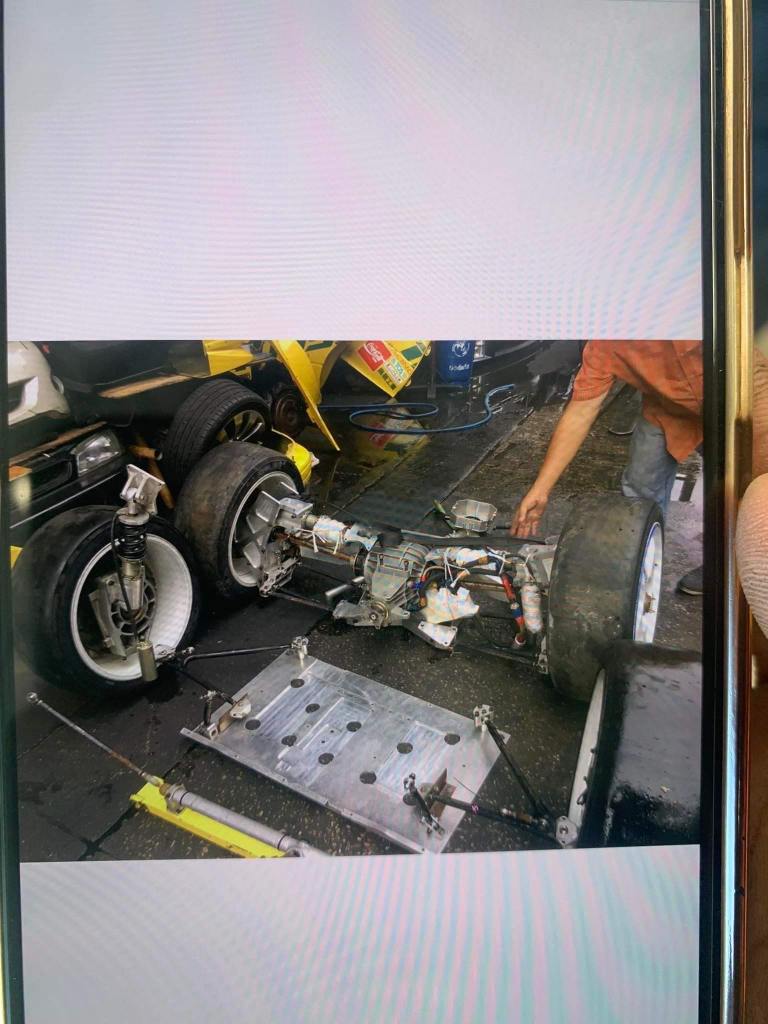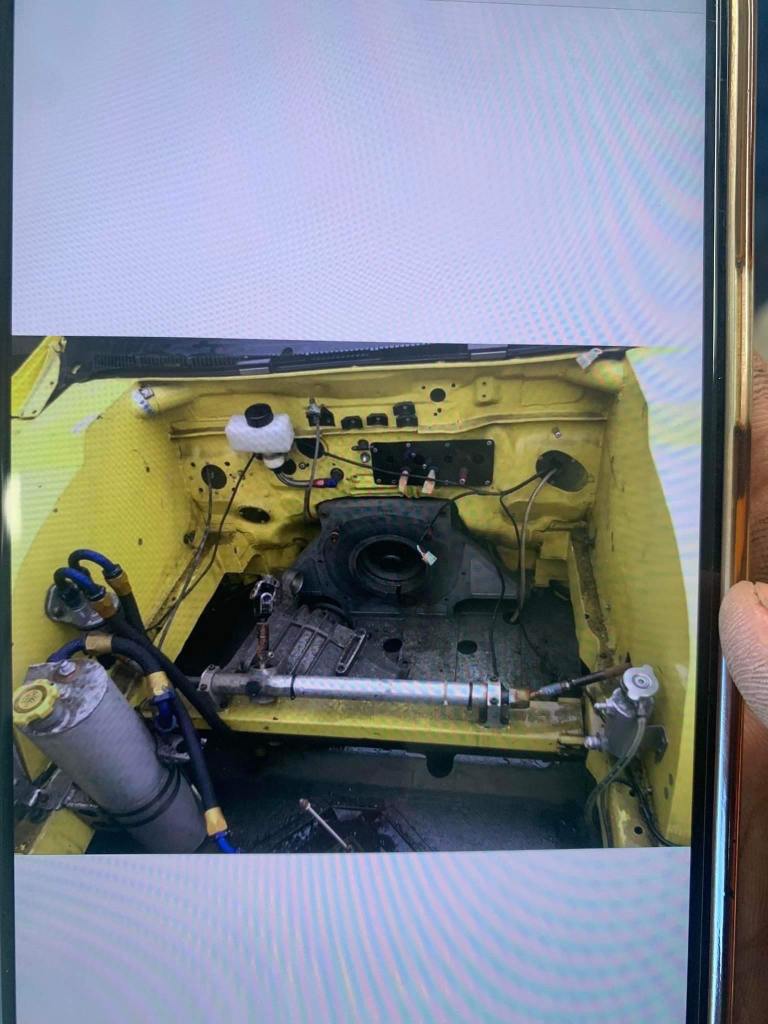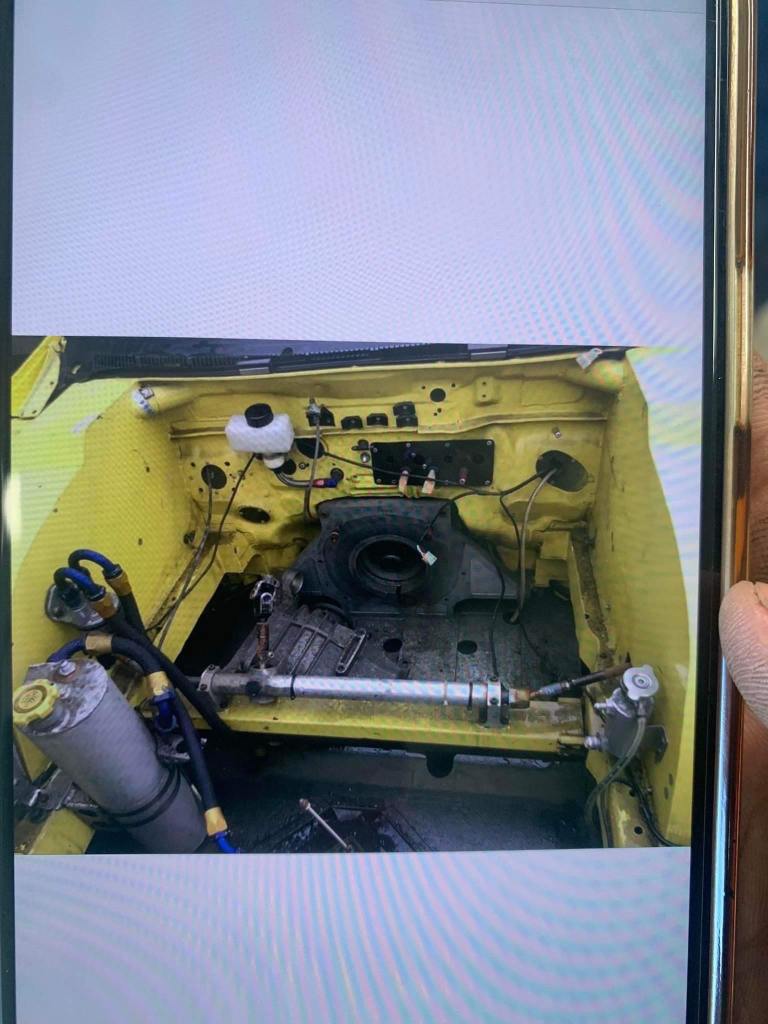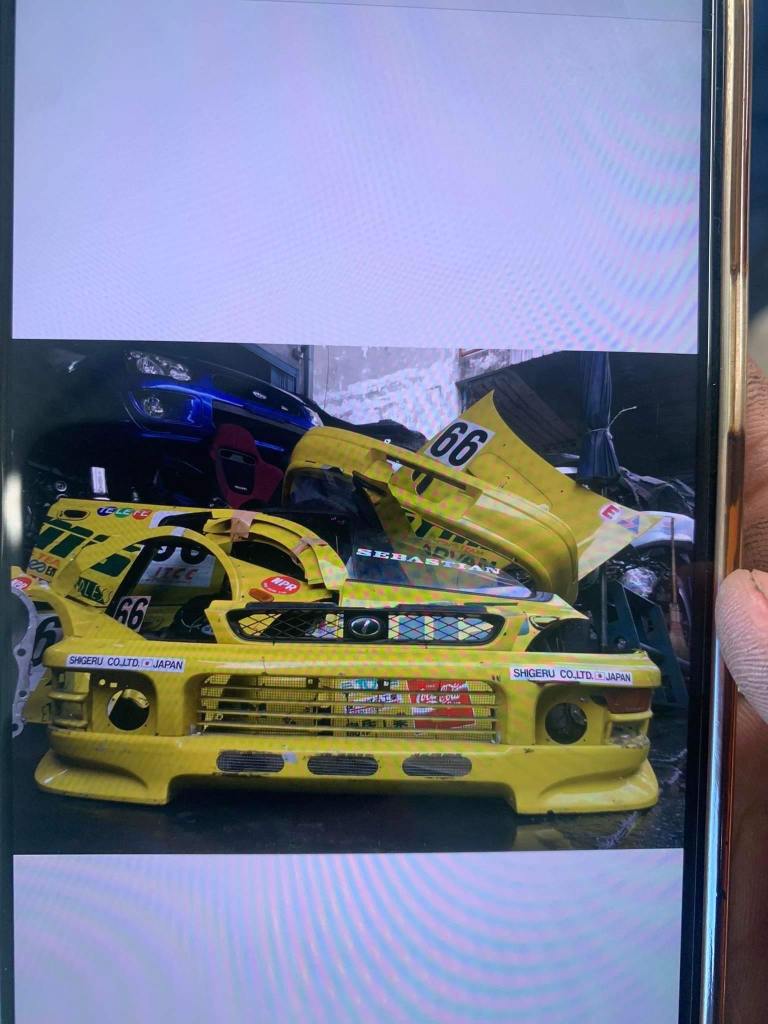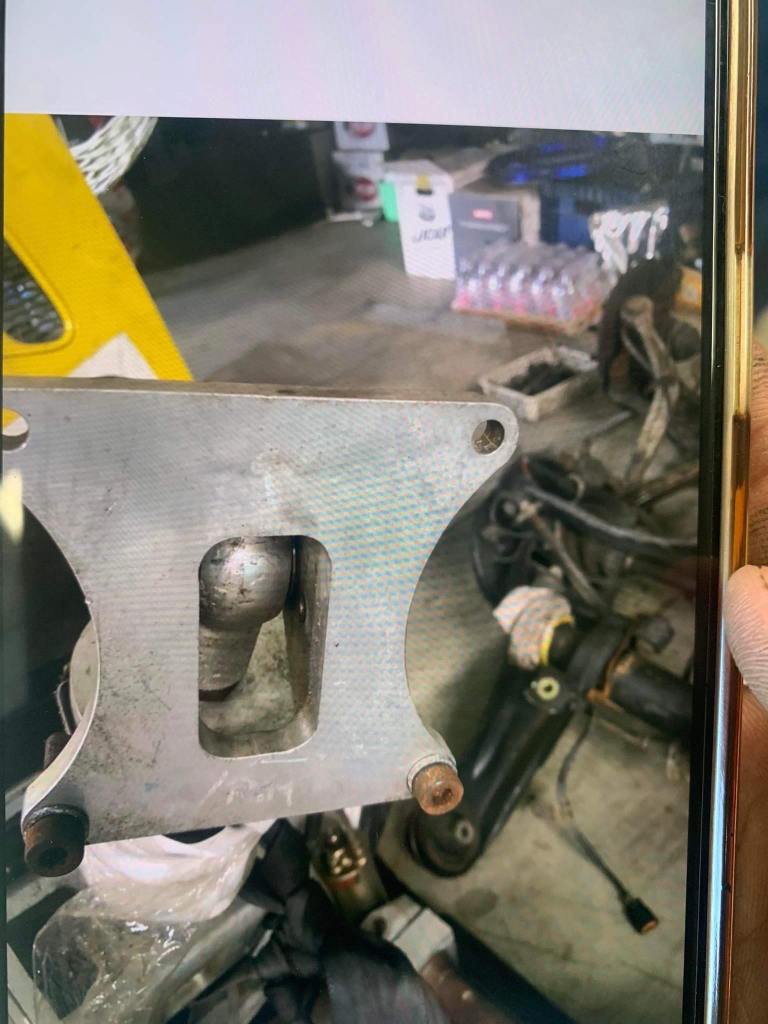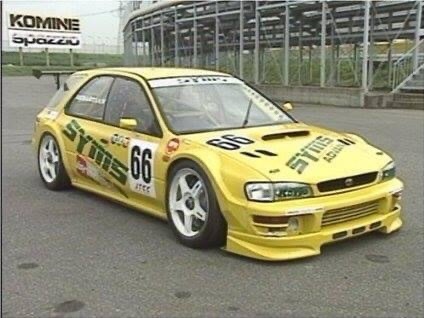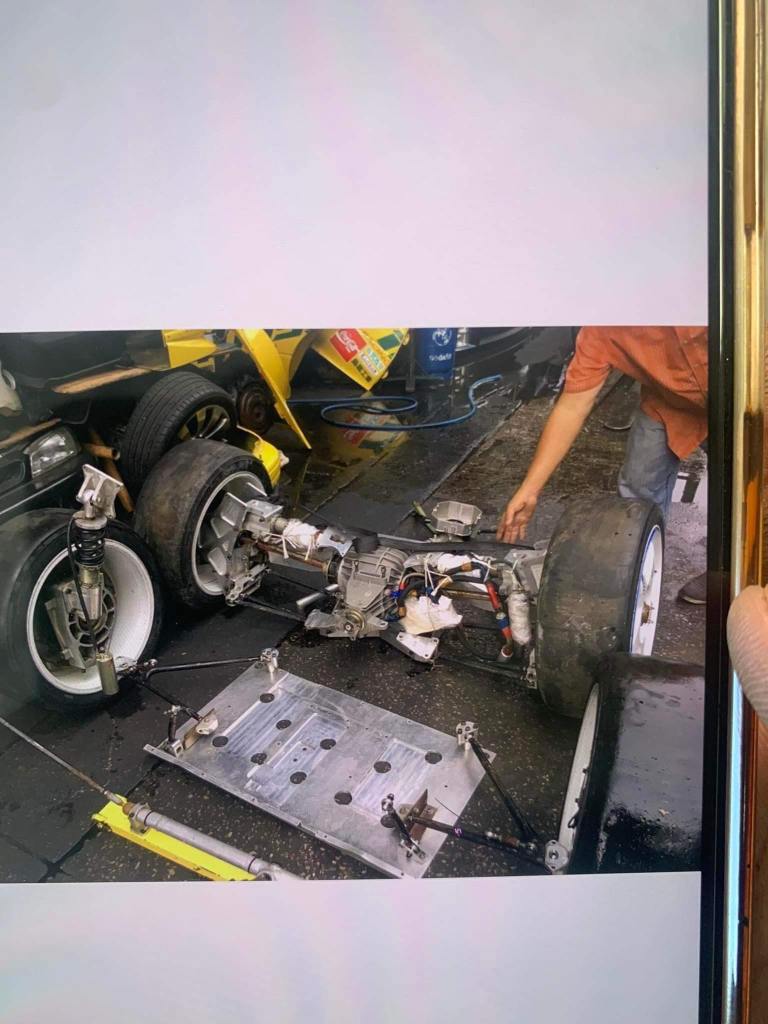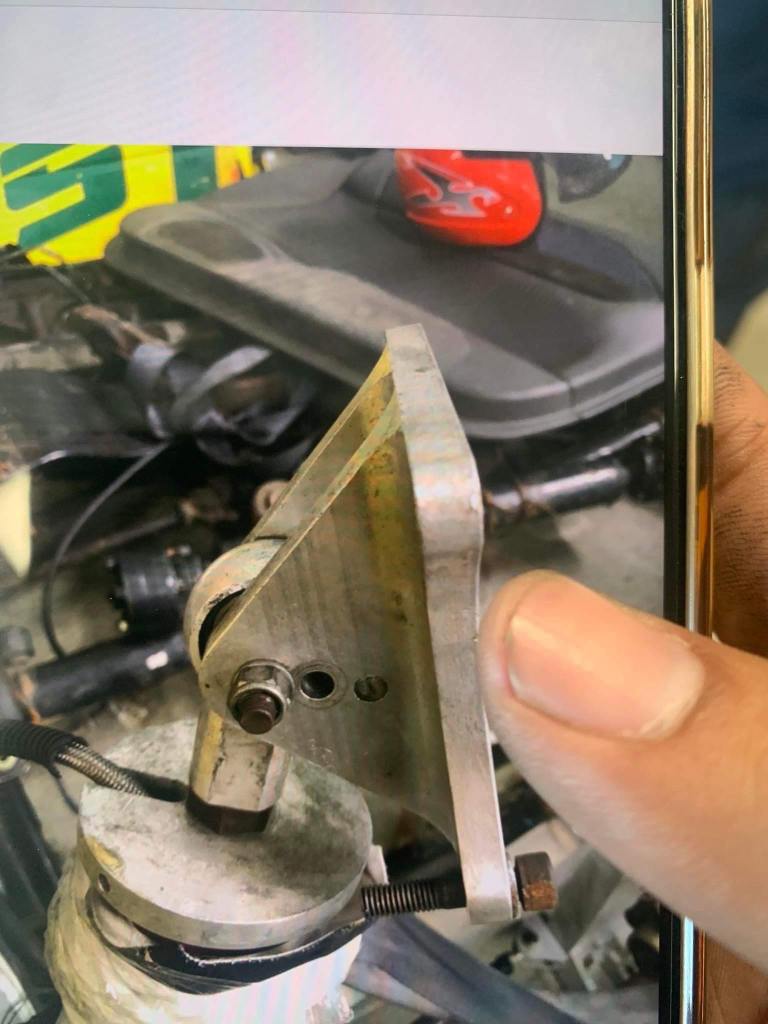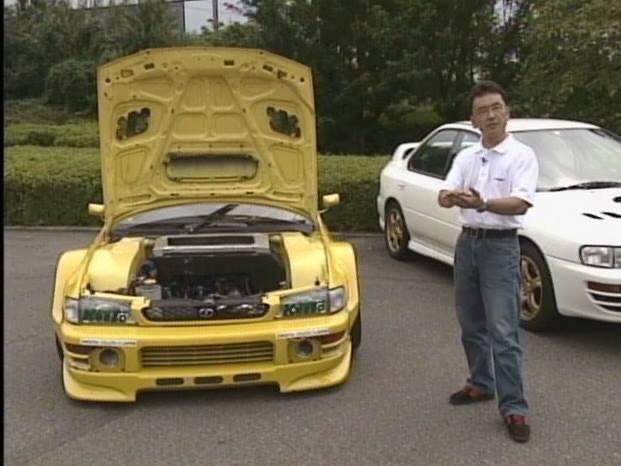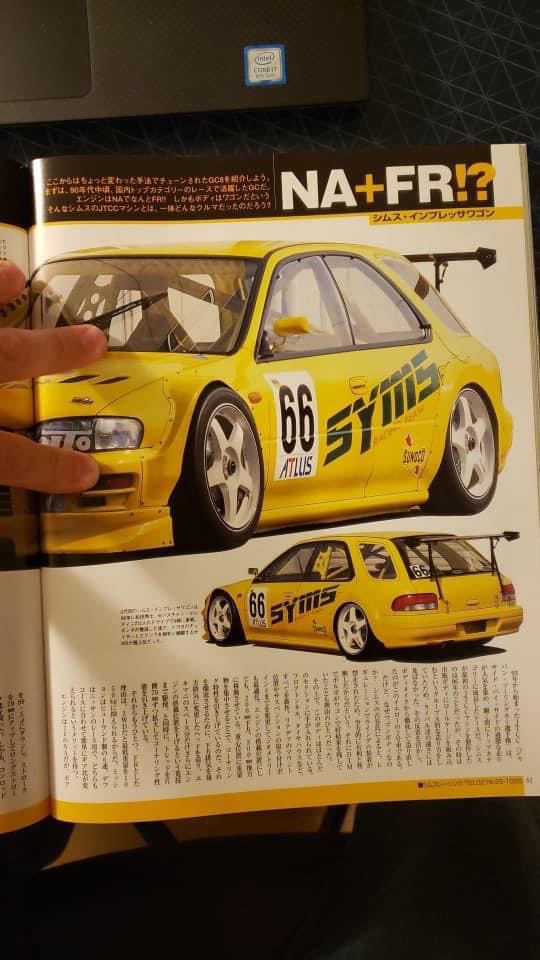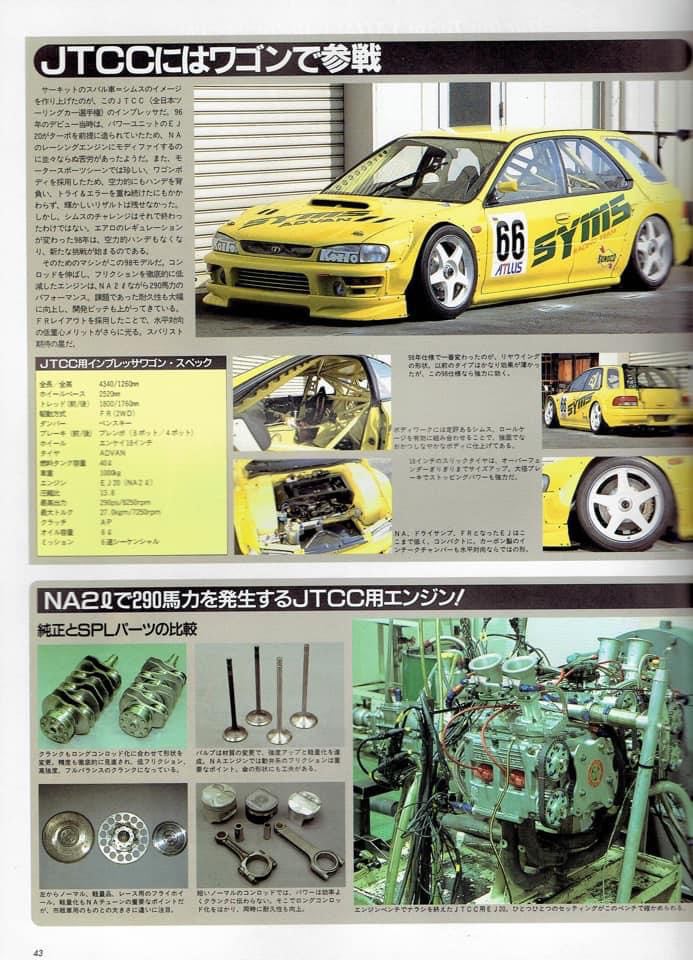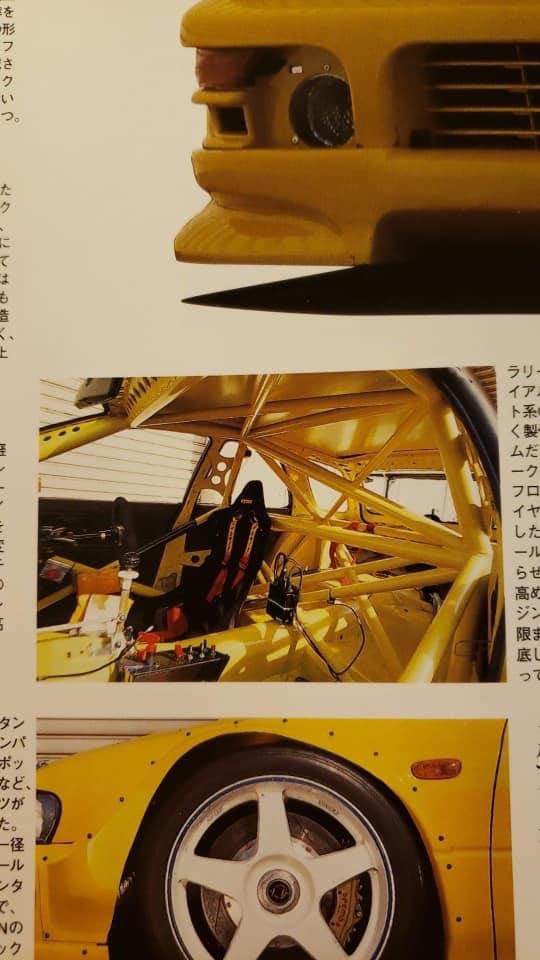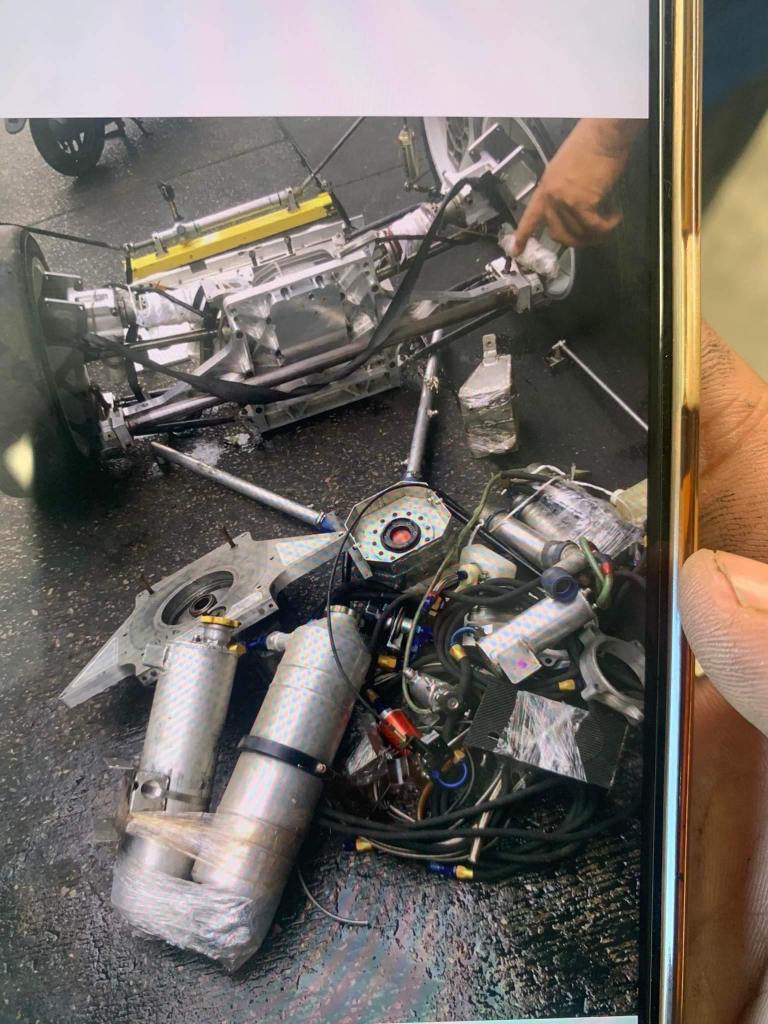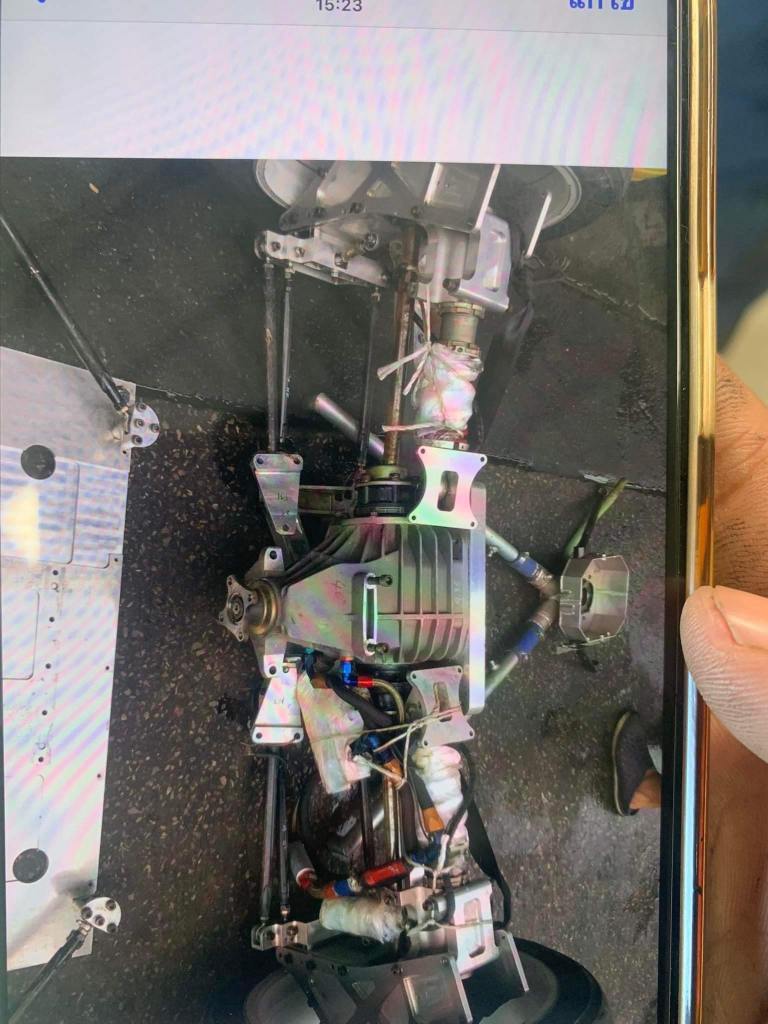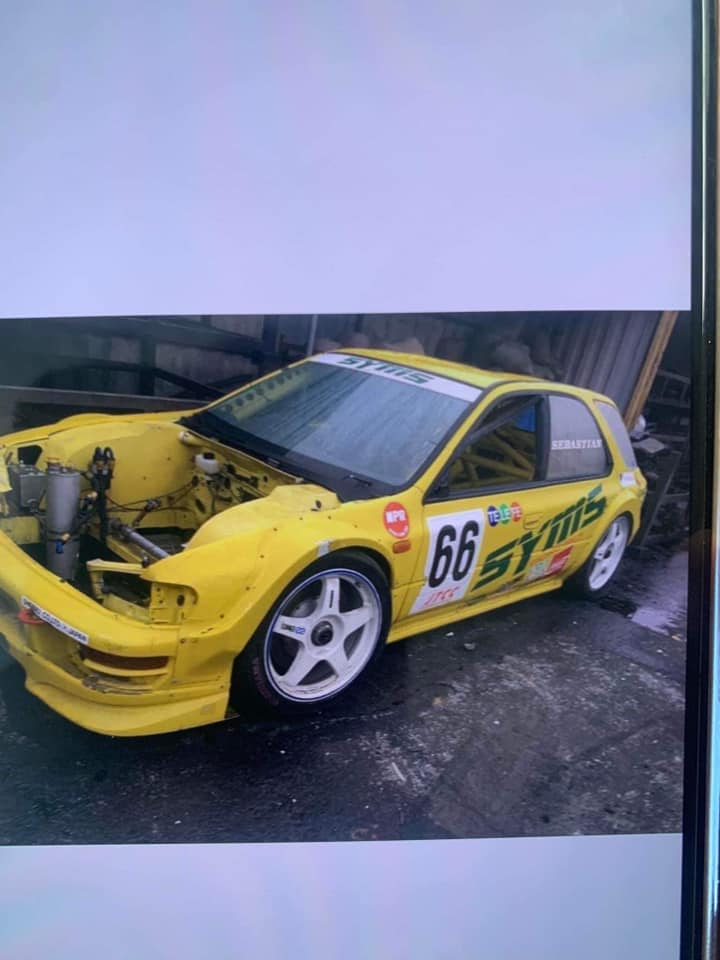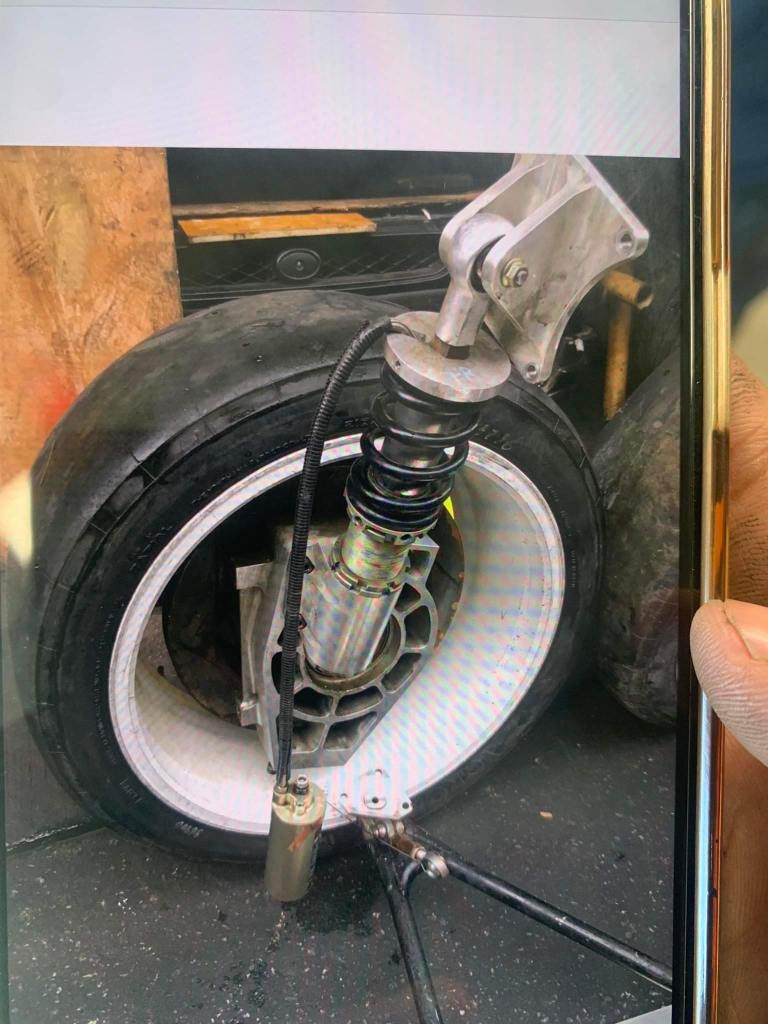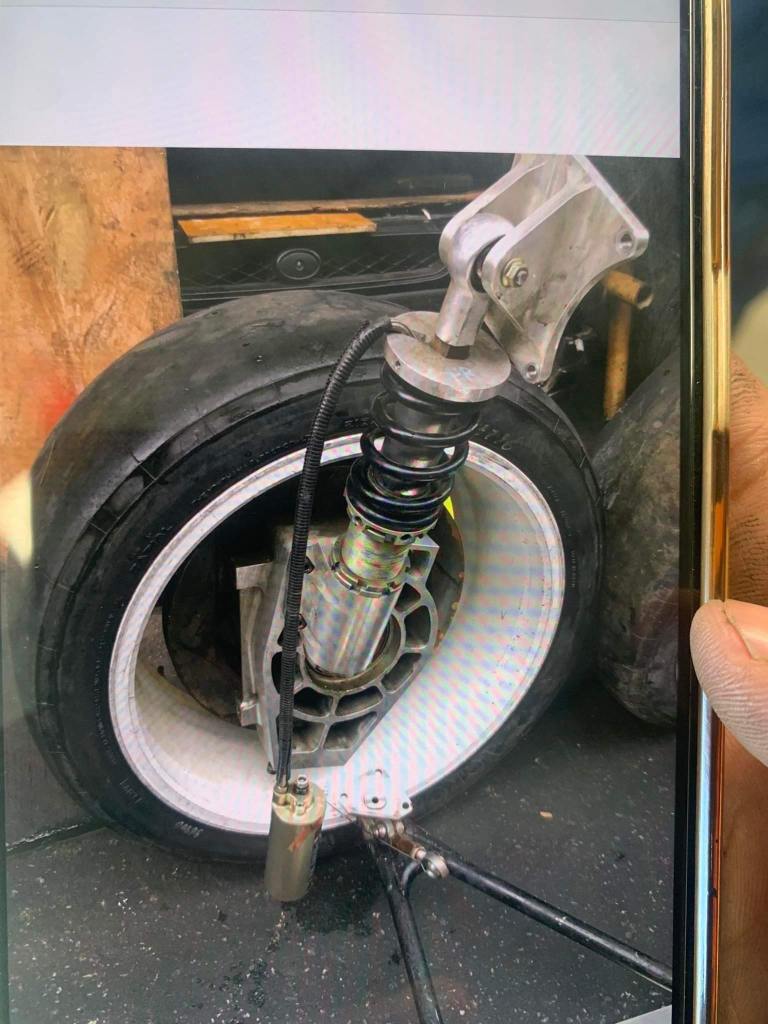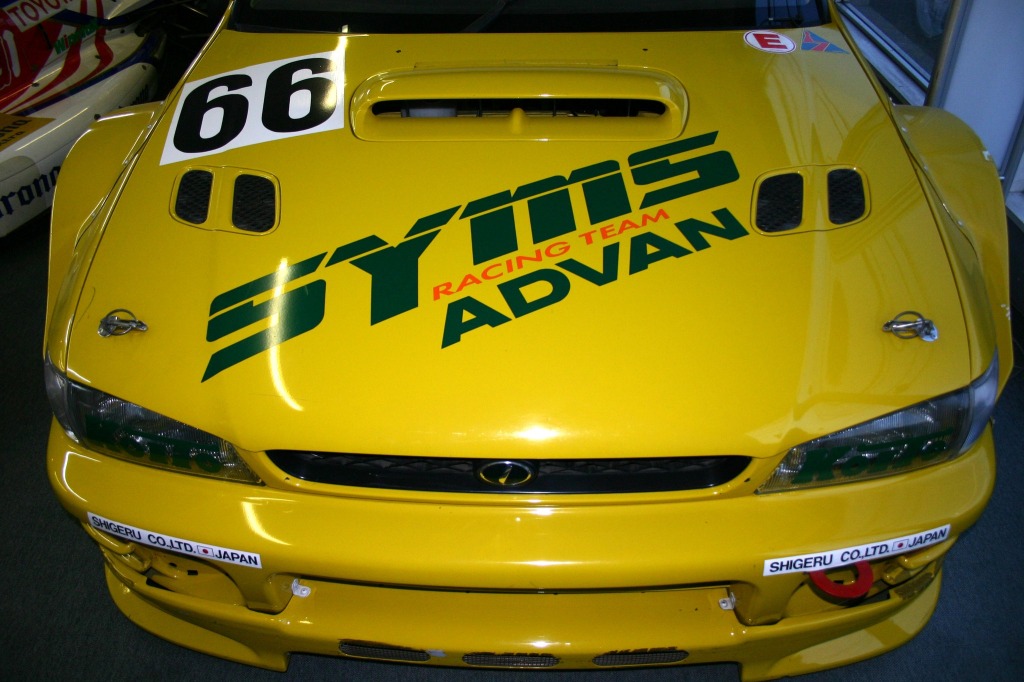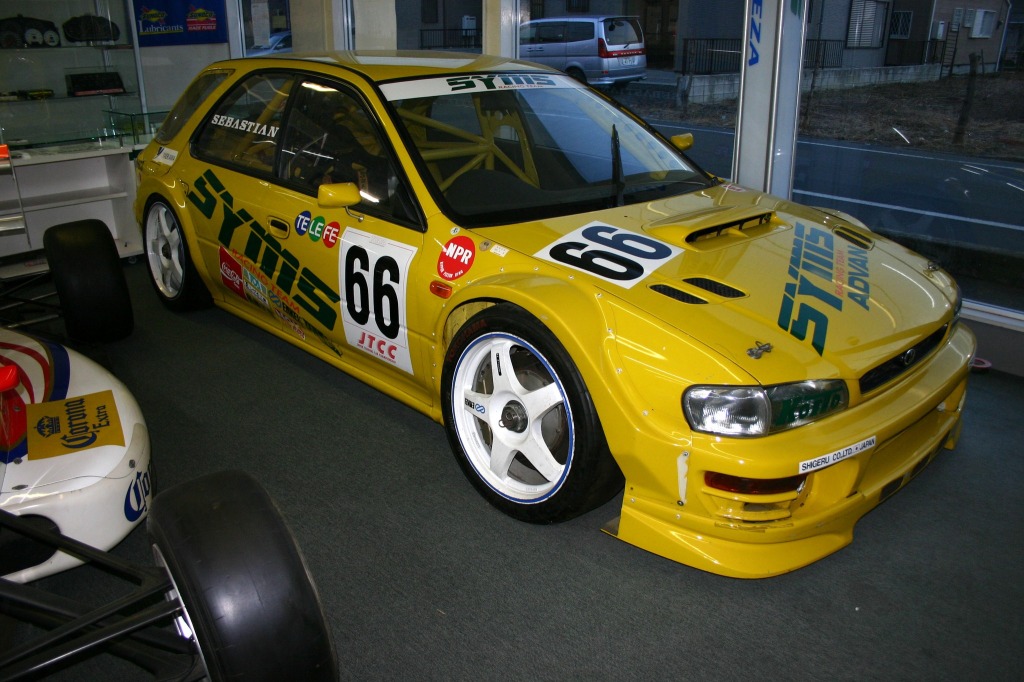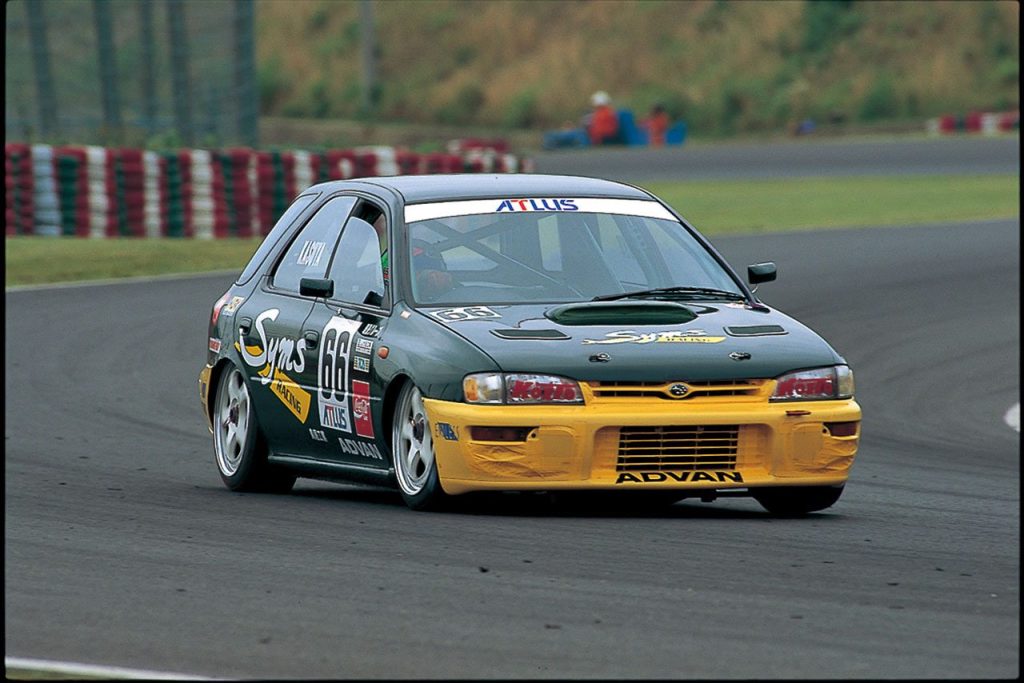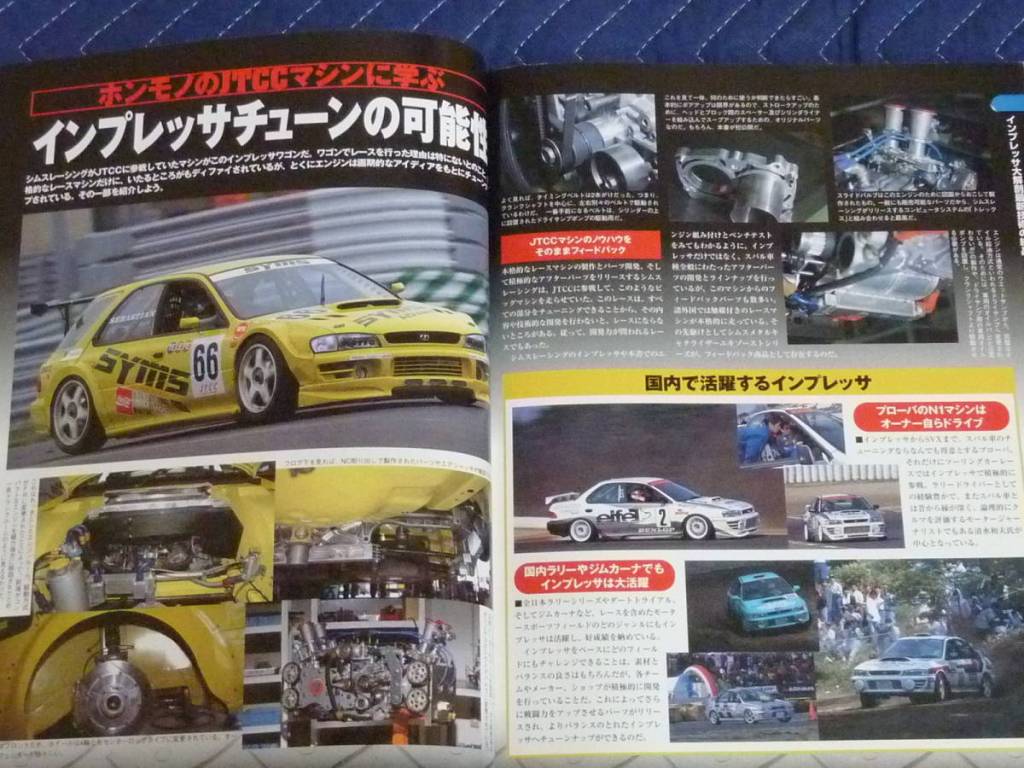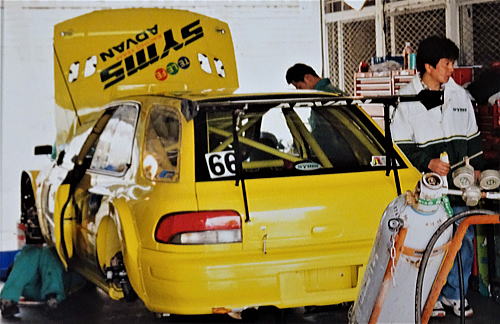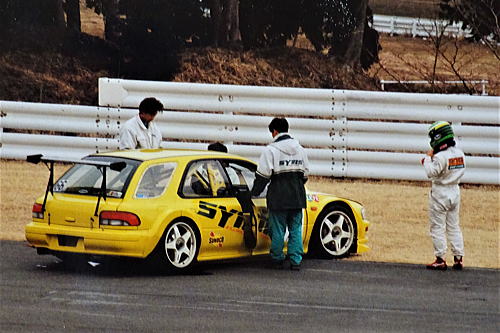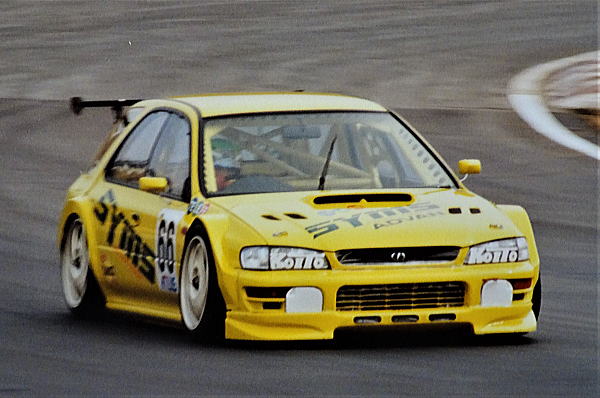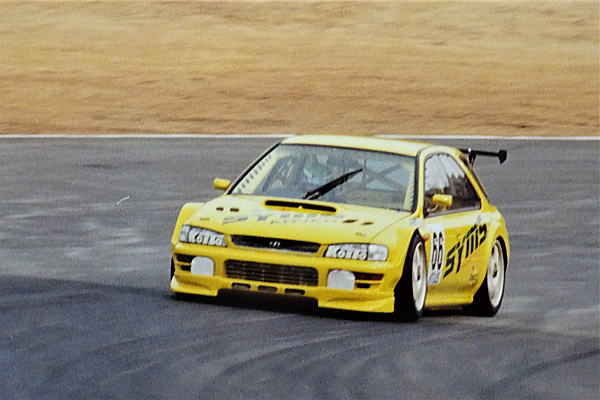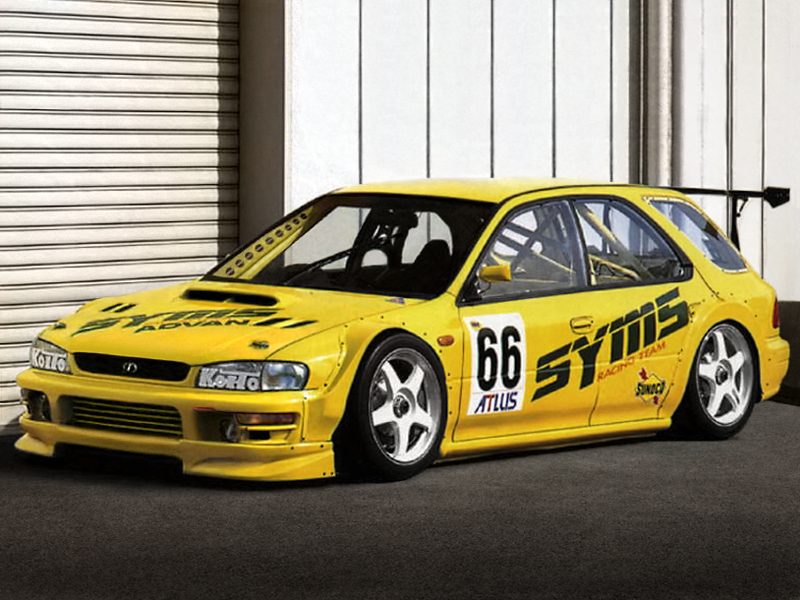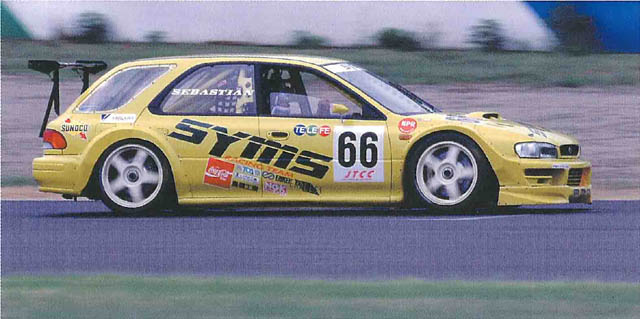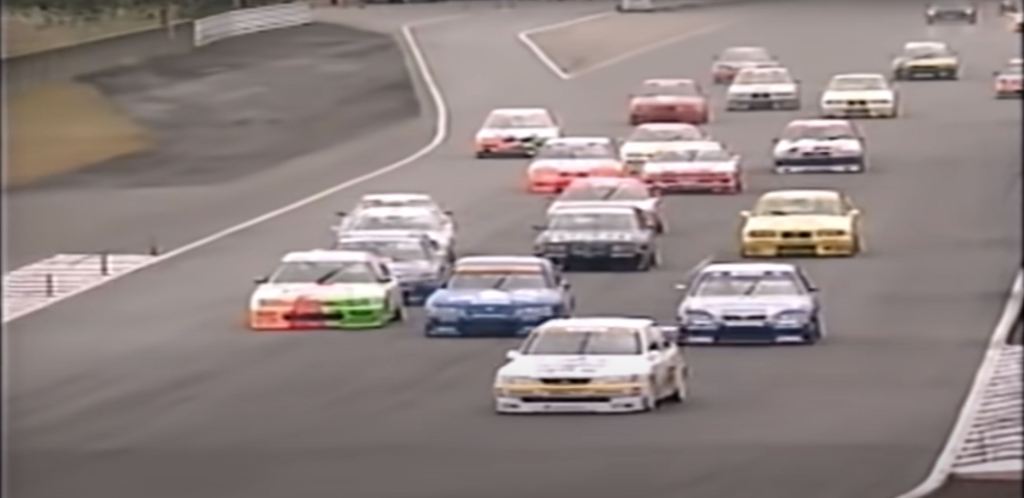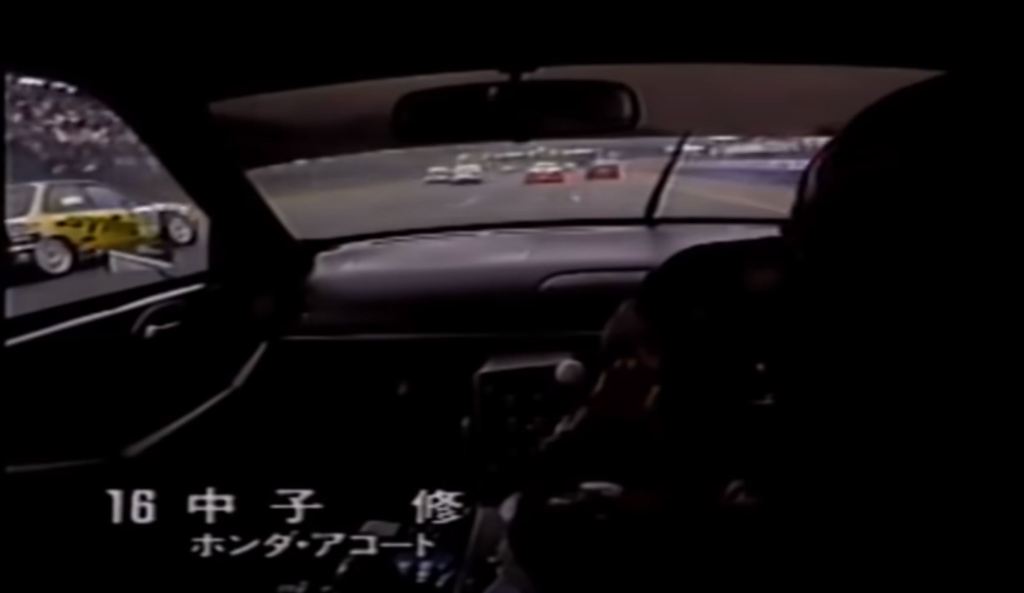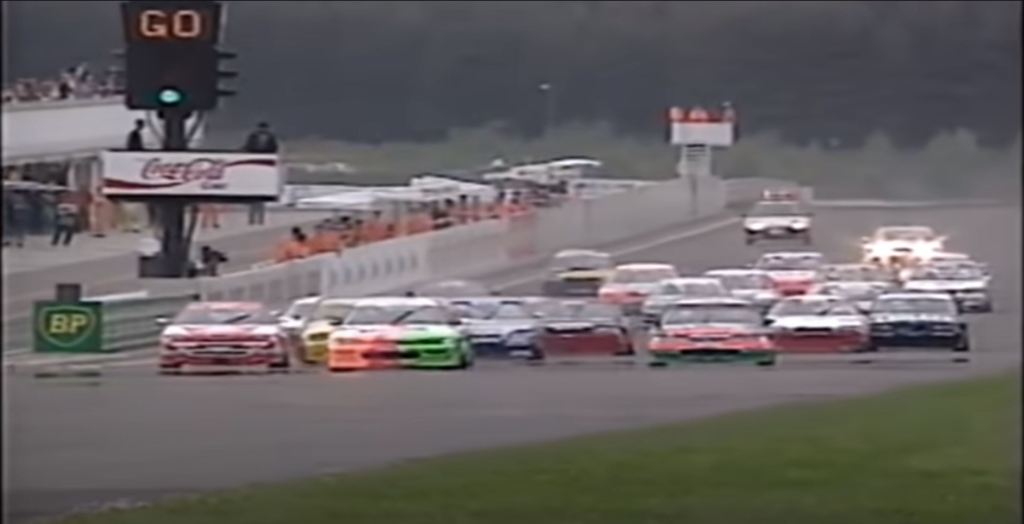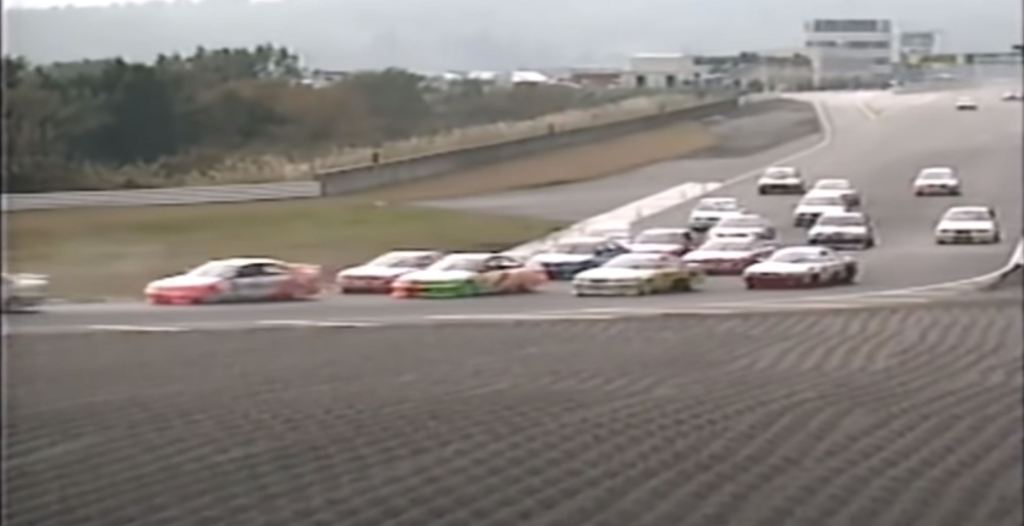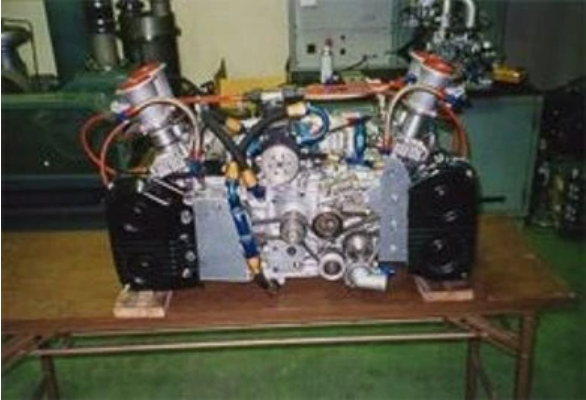Competition Imprezas
The SYMS Japan GF8
Arguably one of the most prominent, yet unobtanium Imprezas to ever grace the race tracks and years later, the internet. Long story short, what started as SYMS shop demo car for products the company produced for sale back in the early 90s, later turned into quite literally a psychotic near-space-frame wagon that the company built to go against the big guns of Toyota and Honda in JTCC.
Here’s a quick synopsis of its unfortunately limited and trying racing history:
A highlight video of the 1996 season can be found HERE but there are very very few instances to see the car
1996: The car in its early green liveried iteration is used for the 96 season. The team misses the first Fuji event, Shunji Kasuya drives the second event, Sugo. The car breaks down about 5 laps into race one, it doesn’t make the second race. Qualify’s last at Suzuka, breaks down in race one, misses race two. At Mine Circuit Kasuya finishes race one in last, breaks in race two. Team skips the Sendai event, later attening Tokachi and breaks in both races. Final event at Fuji the car finishes last in race one, breaks in race two.
Highlight videos of the 1998 season can be found HERE, HERE and HERE
1997/1998: JAF introduces new rules for JTCC including aero, chassis, suspension and engine changes. This essentially allows teams to thoroughly revisit old cars, or develop new cars to push the rules, SYMSs takes to the drawing board and pulls the stops for the new rules, this is the more commonly seen yellow liveried iteration. The team doesn’t race the car for 97 as they spend the time developing the new setup for the 98 season. The new driver Hideshi Matsuda qualify’s last at the first event at Fuji but unfortunately again far off pace. The car will go on to break in both races. The next event at Motegi, a new Argentine driver Sebastian Martino takes over, but still finishes the event in last place. The teams third and final round at Sugo, Martino would break in race one and miss race two. Even with how advanced the car was for the time it wasn’t enough to take on the big teams, and in another blow against the team the JTCC series ends with the 98 season so the car is later retired as it has no purpose. It sat at the SYMS shop on display until roughly a time between 2005-2007 when it was sold and shipped to Thailand, and unfortunately fell to the wayside and was dismantled after landing overseas. Im waiting on more information but some pieces are still kicking around both japan and thailand as of 2023.
Heres largely unseen video footage of the car from Hyper Rev’s very first VHS series from 1998, i had this brand new tape sent from Japan and digitized to get it onto the web.
One of the very few photos available of the engine in its earlier Green configuration
Engine: The EJ18 based two litre used a longer stroke rod/crank setup and in its earlier 96 iteration made roughly 300bhp (8250rpm) – 230btq (7250rpm), later 98 iteration was supposedly dropped to the 290whp range for reliability. Internet lore puts the cost of the engine alone around $250,000usd, personally i find this exorbitant for power units alone and would guess this would be a total development cost for the car as a privateer team at a top racing levels for the mid 90s. Close up photos of the engine dont exist, but from what is available the early Green engine uses roller barrel individual throttle bodies with port injection that looks to be in a similar location to OE manifolds, the later Yellow moved to a slide based ITB system with injectors moved quite high up towards the inlet trumpets. The heads looked to be factory castings and use factory valve covers, based on the level of work its safe to assume they’re ported/decked to some degree and use heavy rate springs with big cam profiles. Both iterations ran a split belt timing system similar to the WRC cars of the era and uses aluminum adjustable timing gears. Both ran a dry sumped oil system, the reservoir can be seen in the driver side engine bay, and the valve covers were modified with oil scavenge ports to prevent pooling during long corners. The Yellow iteration utilized the engine bay space more efficiently with a carbon airbox fed by the factory hood scoop.
Trans/diff: Transmission is unknown but assumed to be a 6 speed sequential unit based on photos and limited info. The trans is contained in a motor plate that houses the clutch assembly and acts like a bell housing. The motor plate was made to fit the tunnel portion of the car and is a supporting member. Rear differential is reported to be a variant of a BMW racing unit housed in a custom rear bulkhead that acts as a crossmember as well.
Chassis/Suspension: Overall height was 1260mm, length of the car was 4340mm utilizing a 2520mm wheelbase and total weight was approximately 1000kg. Front track width is 1800mm, rear is 1760mm. Brembo 8 piston front calipers, 4 piston rears were tucked inside 18″ Enkei center lock wheels with Bridgestone Advan tires. The fuel tank was a 40L but no photos exist. Suspension on this car is quite wild, Penske dampers were used on the seemingly custom machined upright assemblies, much of the overall design looks to be similar to era WRC imprezas and possibly utilize some parts from those as well. Front end oddly maintains a mcpherson layout, the lower control arms mounted to a billet plate assembly under the car that looks to also mount the engine to the trans plate/bulkhead, assuming due to the height of the car and location of the engine in the chassis. Oddly the steering rack is high in the engine bay and ahead of the axle centerline but is a rear steer knuckle, assuming again due to drivetrain packaging. I cant imagine this was a well steering car. The rear suspension again followed similar layout to the OE design with a trailing arm/lateral link setup albeit significantly different geometry. The uprights look to be sandwhiched between billet plates, lower strut mounts being at the top side next to the tire with the struts landing in a similar location to an OE car. The rear diff bulkhead looks to be the crossmember that the suspension is bolted to, all one unit. The body, aside from the obvious looks to be pure functional modifications to fit the tires and how they need to move about the wheel wells. Molded overfenders, most likely fiberglass since that was the go-to material for the era, the later Yellow utilized a rear airfoil mounted to the hatch, smaller mirrors on the doors to cut drag and surprisingly for how wild the car was it looks to use factory hood/scoop/vents, bumper, lights, grille and turn lamps but im sure rulesets of the era would dictate what needs to stay on the car.
